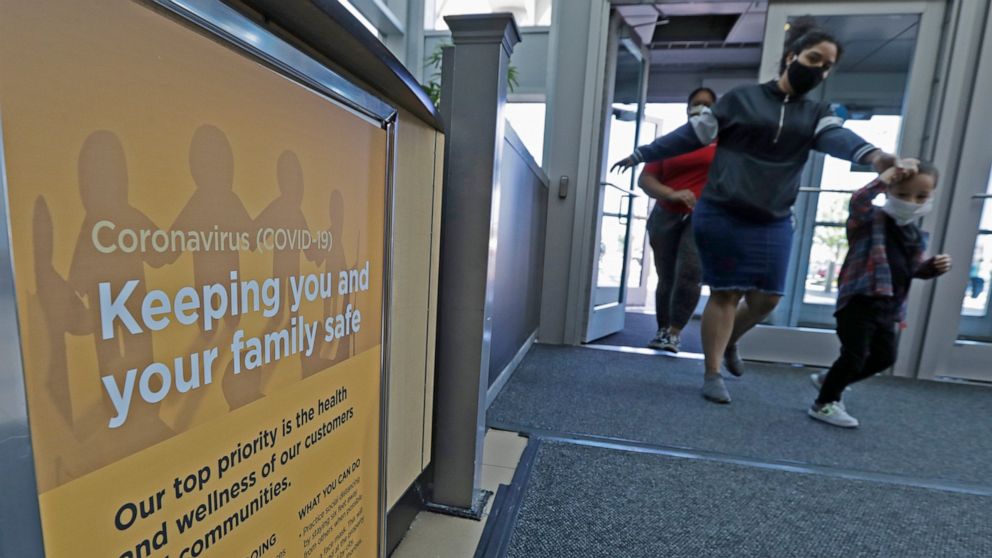
Stocks traded well off their session lows on Thursday as a rally in bank shares offset another dismal round of U.S. unemployment data.
The Dow Jones Industrial Average traded just above the flatline after falling 458 points earlier in the day. The S&P 500 and Nasdaq Composite also bounced from their lows, trading lower by 0.4% and 0.6%, respectively.
Bank of America and JPMorgan Chase both climbed more than 2% while Wells Fargo advanced 7.3%. Citigroup gained 2%.
Earlier in the day, the major averages all fell more than 1.5% after the Labor Department reported a total of 2.981 million Americans filed unemployment insurance during the week ending May 9. The number came in worse than expectations of 2.7 million new claims, according to economists polled by Dow Jones.
The new claims also brought the coronavirus crisis total to nearly 36.5 million over the past two months, by far the biggest loss in U.S. history. A record of 20.5 million jobs were lost in April alone as the coronavirus-induced economic shutdown tore through the economy, sending the unemployment rate skyrocketing to 14.7%.
For the week, the Dow and S&P 500 are down more than 4%. The Nasdaq was down 3.8% week to date.
On Wednesday, the Dow and S&P 500 fell 2.2% and 1.8%, respectively, while the Nasdaq Composite lost 1.6%. Those declines followed a stark warning from Federal Reserve Chairman Jerome Powell. So far this week, the Dow has lost more than 6%, while the S&P 500 dropped over 5%.
“While the economic response has been both timely and appropriately large, it may not be the final chapter, given that the path ahead is both highly uncertain and subject to significant downside risks,” he said, noting more needs to be done to support the economy amid the coronavirus pandemic.
Powell made his comments as several states begin to reopen their economies.
“There are a lot of variables in terms of really how the economy opens here. It’s going to be very uneven,” said Gregory Faranello, head of U.S. rates trading at AmeriVet Securities. In terms of additional efforts, Faranello said the Fed could implement some “yield curve control,” among other measures.
“From a capital perspective and a leverage perspective, the Fed can grow the existing programs that they have online,” Faranello said.
Market sentiment was also dented after two major investors raised questions about the market’s current valuation. Appaloosa’s David Tepper told CNBC’s “Halftime Report” this is the second-most overvalued market he’s seen, behind only the one in 1999. Meanwhile, Stanley Druckenmiller of Duquesne Family Office said Tuesday said: “Risk-reward for equity is maybe as bad as I’ve seen it in my career.”
Despite the sharp losses this week, the S&P 500 remains more than 28% above its March 23 low. The Dow has also rallied more than 27% since then as shares of major tech companies surged.
“Those stocks that were doing well before all this are the ones that did well” after the initial sell-off, said Aaron Clark, portfolio manager at GW&K Investment Management. “It’s like the big get bigger and stronger.”
Still, Clark highlighted the uncertainty investors currently face, noting: “Nobody’s ever been through anything like this. … For now, we’re just hoping we’re finding the right businesses that can continue to grow and take share and come out stronger.”
Subscribe to CNBC PRO for exclusive insights and analysis, and live business day programming from around the world.

